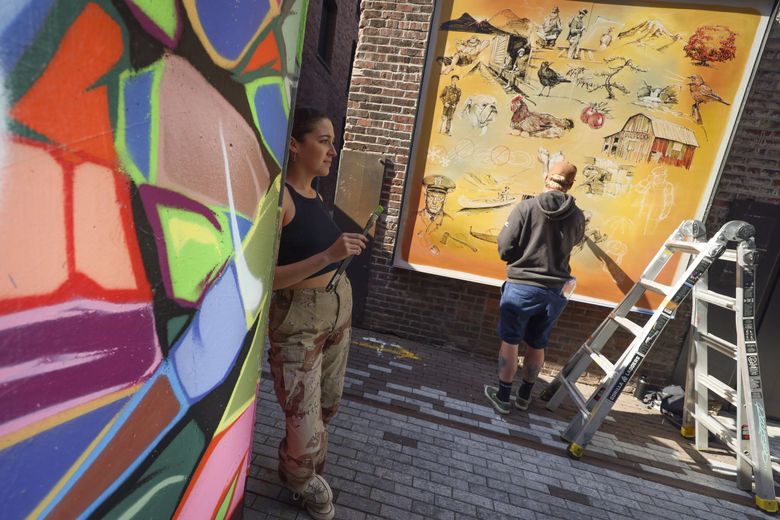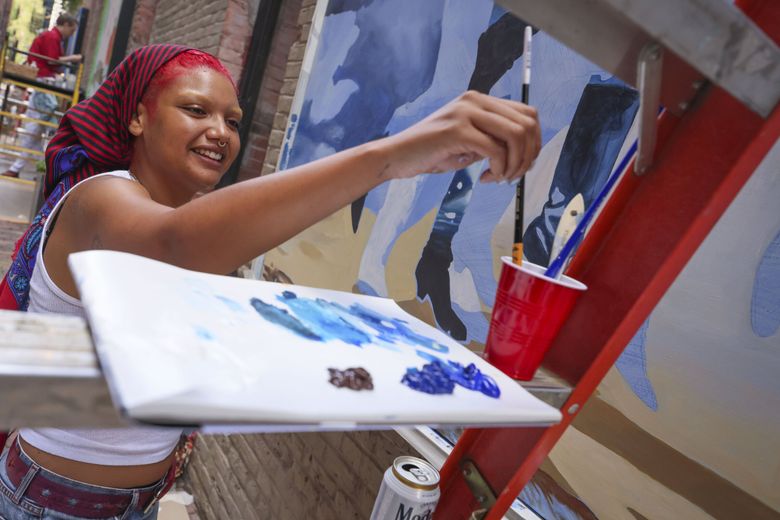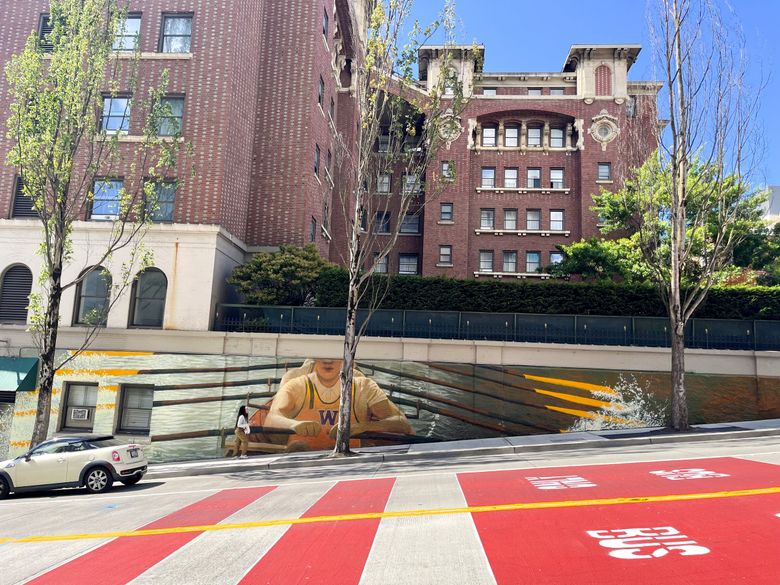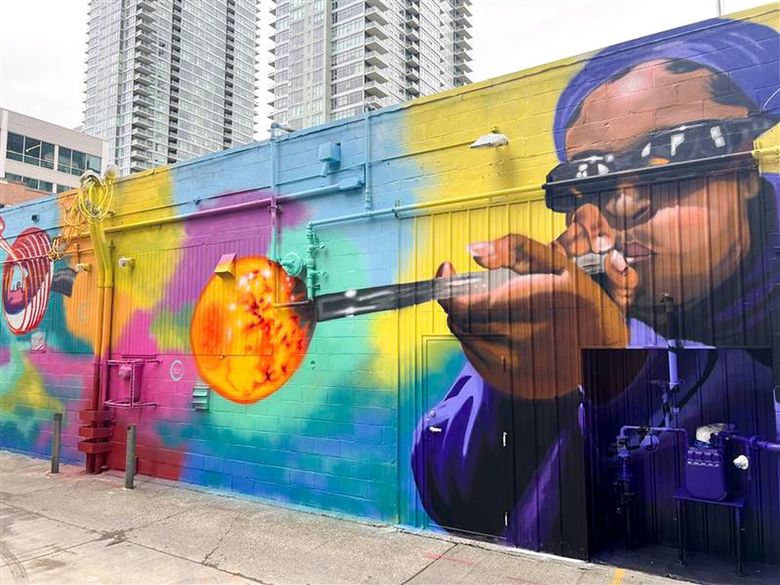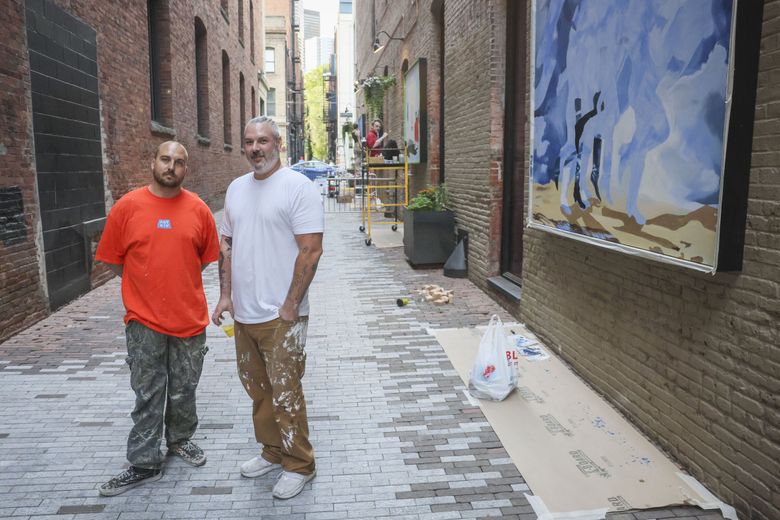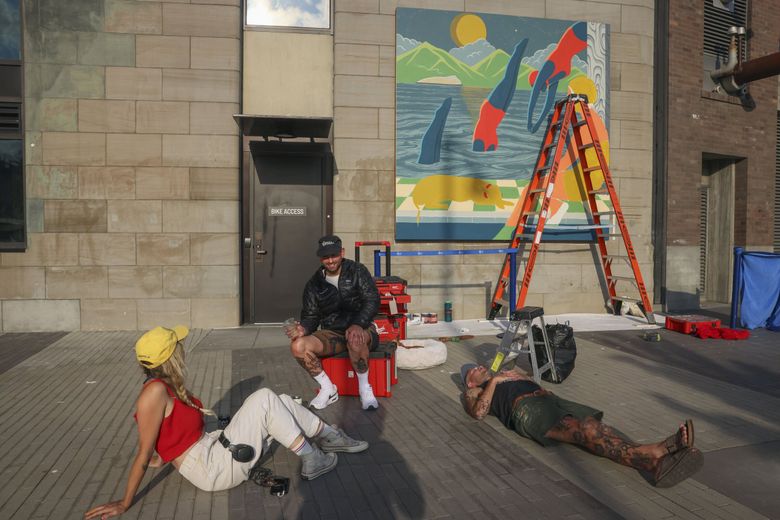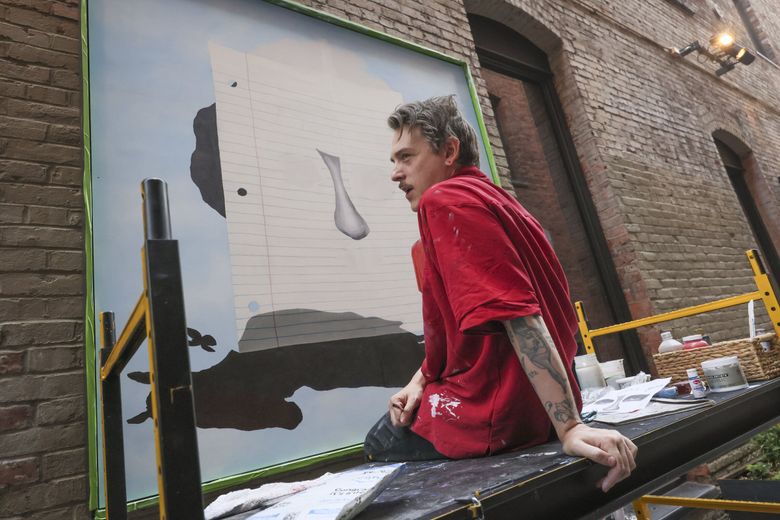News
The Seattle Times: Why Seattle is exploding with new murals this summer
Posted on

This article was originally published by The Seattle Times on Aug. 14, 2024.
By Margo Vansynghel
Horses gallop through a Pioneer Square alley. Midnight divers jump from the waterfront into seaweed-shaded waters. Multicolored, mythical creatures will fly through the Chinatown International District, and a giant gorilla will appear somewhere in Belltown.
If you’re in downtown Seattle this summer, keep your eyes open — and get ready to see art. More than four dozen new murals — by famed local muralists like Sam Sneke, Stevie Shao or Joe Nix and lesser-known artists alike — are sprouting up across alleys, storefronts, parking lots and other buildings across the city’s downtown core. Since many of these new murals will be painted in the coming weeks, art spotters will have the unique opportunity to see the muralists in action.
So what’s behind this mural boom? Summer is usually prime mural painting time anyway, especially in our otherwise drizzly city. Plus, business owners, neighborhood organizations and policymakers are increasingly seeing public art as a draw for visitors, as well as a deterrent to graffiti.
This summer’s especially sizable mural surge is largely fueled by an influx of public dollars as well as a coordinated effort by neighborhood organizations and art curators to support local artists and draw more visitors to downtown.
The “mural hype” first exploded during the pandemic, when boarded-up windows became canvases, said Shao, who is painting a mural in Belltown this week and will paint one in the CID later this year. “Having publicly accessible art allows people to discover new artists and learn about different mediums,” Shao said. “This is really enriching for the community.”
An additional two dozen murals, most of which are already up throughout Pioneer Square and surrounding neighborhoods, come courtesy of two local art curators, Dom Nieri of art production house ARTXIV and Gage Hamilton of the nonprofit art organization Forest For The Trees, which organizes exhibits and a yearly art festival in and around the RailSpur development. (A deadly shooting took place during this year’s event. Police are still investigating the case.)
For the $150,000-plus project, Nieri and Hamilton partnered with the Seattle Art Fair, Seattle Office of Arts & Culture and a host of neighborhood organizations and real estate groups, including the Alliance for Pioneer Square and RailSpur developer Urban Villages, to pay a slate of largely local artists to paint murals across the neighborhood.
The idea, they said: to create space for more public art in Pioneer Square, and visually mark the neighborhood as a “creative district.”
It’s also a historic district, which means there are rules about what can be painted where. Nieri and Hamilton found a way around that by attaching framed outdoor panels — some up to 10 feet tall — to buildings.
This has multiple upsides: The curators can swap out the artworks for new ones to keep things, as they put it, “fresh.” It also means they can dismount and sell the artworks and send more cash directly to the artists.
“We want to keep it active,” Hamilton said. “It’s not just a ‘one and done.’”
Local artist and curator Aaron Asis feels similarly. He’s organizing the Belltown Mural Festival (running through Aug. 18), a free street festival that brings all the Belltown muralists from the Hope Corps project together and features live mural painting, outdoor movies, art vendors, music performances and multiple “art surprises” Asis didn’t want to disclose ahead of time.
“This is bigger than just making murals,” Asis said, noting his goal is to bring the neighborhood together and offer the public a chance to interact with and celebrate “the work artists do in our communities.”
In Belltown and beyond, those artists — at work on the murals as visitors drift by — will be in the spotlight. “The painting [of the murals] itself is like a performance, like a dance on the wall,” Asis said. The artist’s plié to paint a detail at the bottom. The arabesque made to reach the paint can on the street. The allegro movements of the brush. “We see art on the wall, but these guys are up there, dancing.”
This coverage is partially underwritten by the M.J. Murdock Charitable Trust. The funder plays no role in editorial decision making and The Seattle Times maintains editorial control over this and all its coverage.
